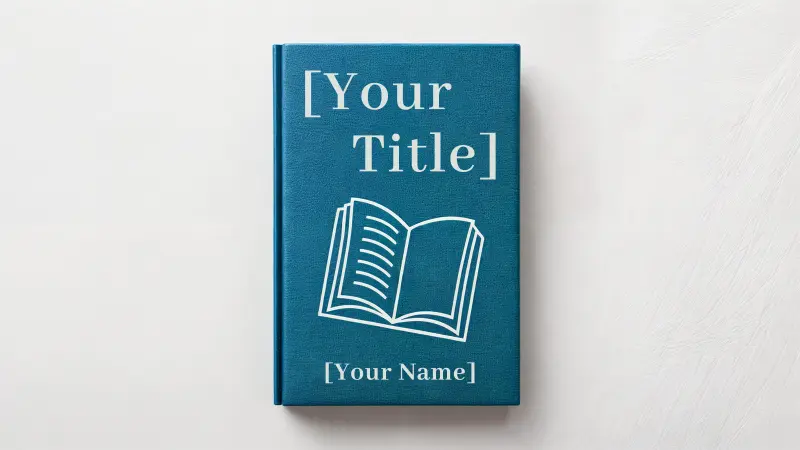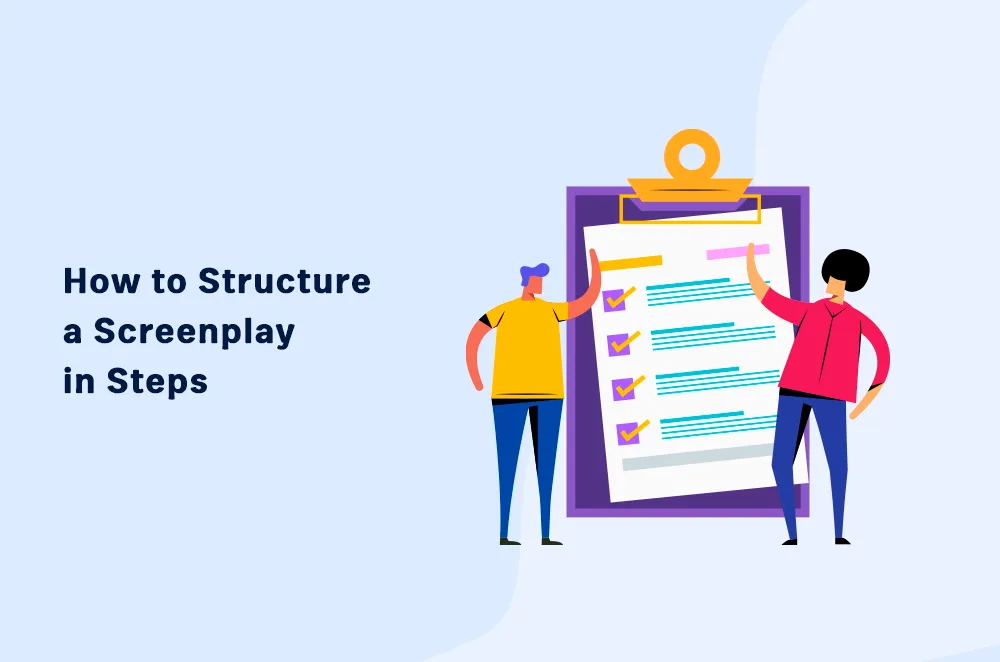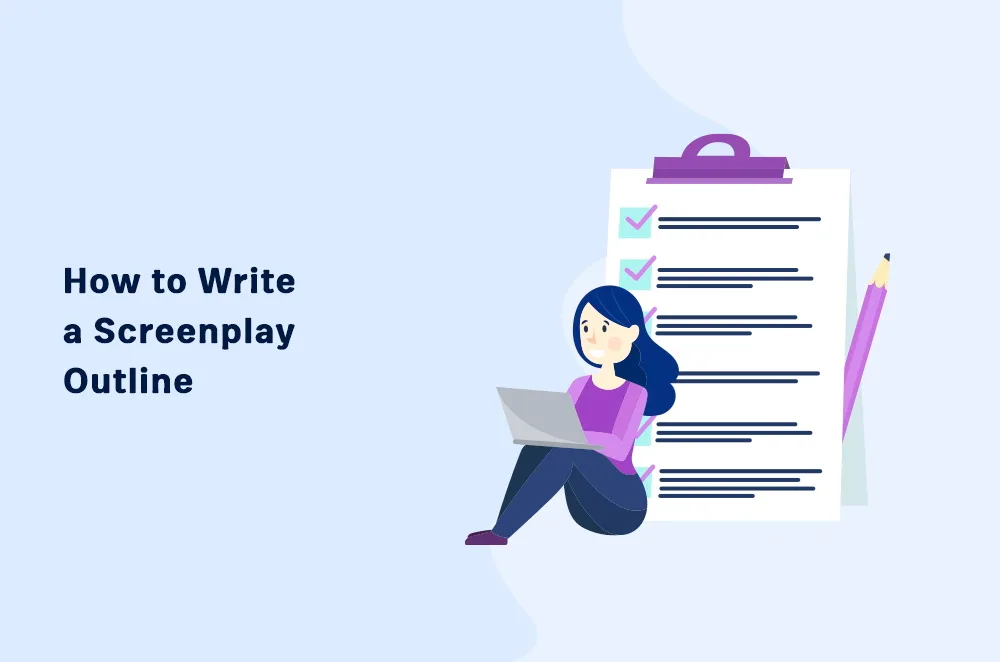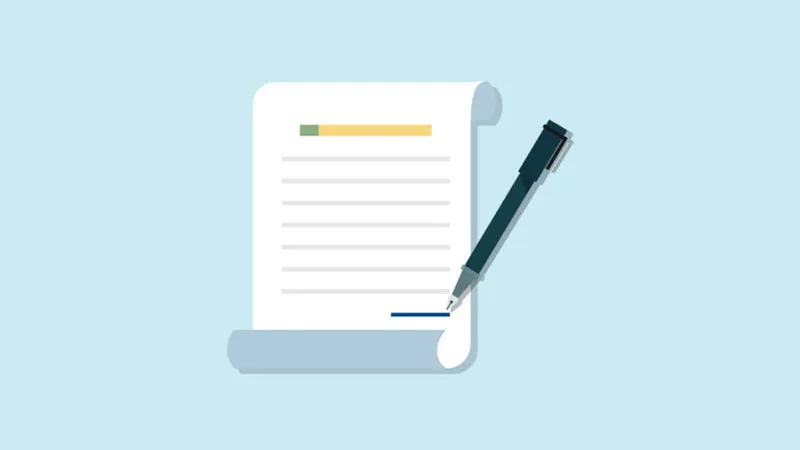There was a time when monologues were used in theatres but things are different now. Monologues are used in books, movies, novels, science fiction, TV series, and pretty much everywhere.
Writing a monologue needs creativity and a systematic approach. You can’t just start writing a good monologue without a plan. A poorly written monologue will bore readers, they might lose interest, or they might skip the monologue outright. In any case, it’s a big loss as a writer if you fail to connect with your readers at any stage.
A great writer makes readers read every single word – not just once – but multiple times.
If you are new to monologue writing and have little or no idea of where to begin, what to include, and how to write a monologue, this actionable step-by-step guide is your best bet.
How to Write a Monologue: Step-By-Step Guide
Writing a monologue doesn’t just require practice but it needs a systematic approach. You can’t just write anything and name it as a dramatic monologue, and expect your audience to make sense of it.
If you are new to monologue writing, the following 7-step guide to writing a powerful monologue will help you master the art.
Step #1: Define the Purpose of the Monologue
You don’t have to add a monologue to your story just for the sake of it rather you must have a clear purpose and objective that you wish to achieve with the help of a monologue. Remember the following golden circle:
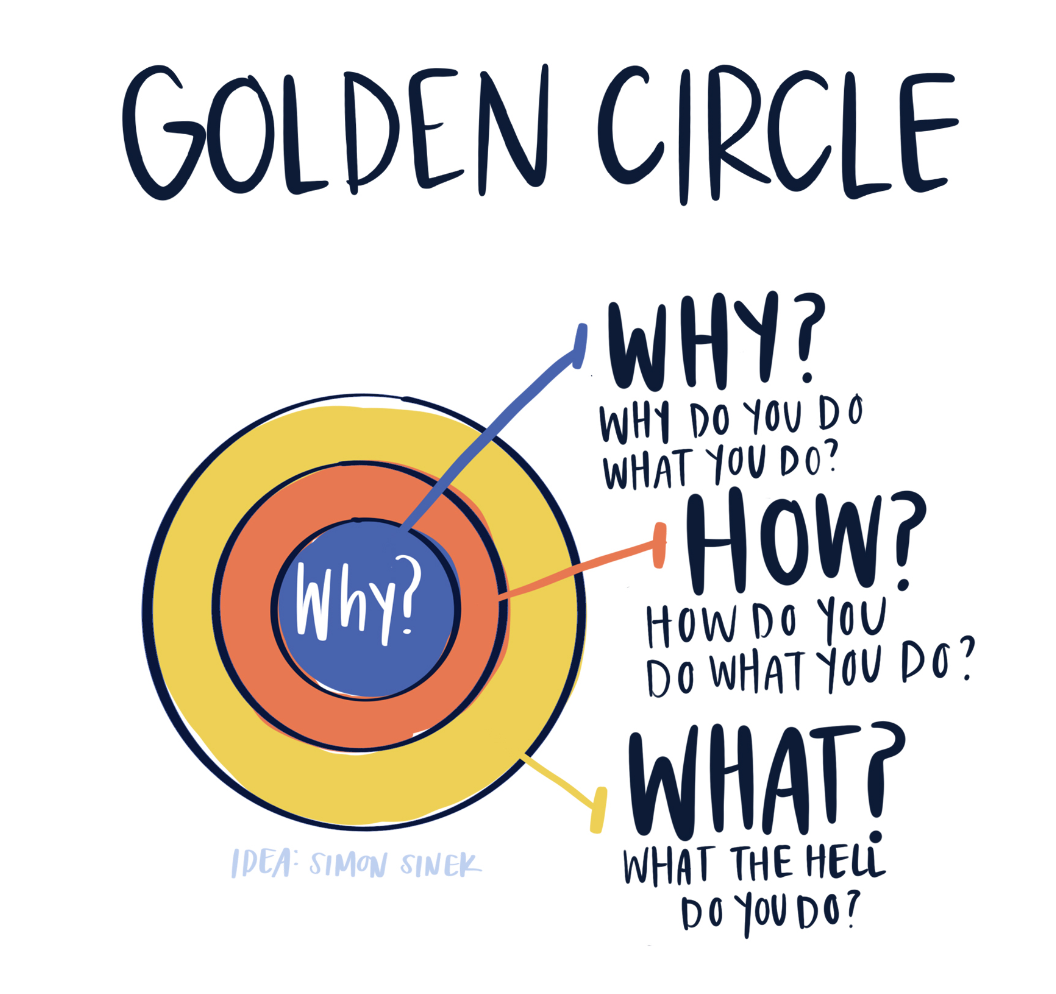
Ask yourself: Why, how, and what of the monologue to clearly define its purpose.
For example, you can use monologue to reveal a secret. Writers use monologues to express a character’s true emotions or thoughts that are, otherwise, hard to express via dialogues. Whenever you find it hard to communicate with the readers via dialogue, you must consider using a monologue.
Defining the purpose of the monologue is the first and most crucial step in the writing process. You can use monologue for a wide range of purposes such as:
Emotional release by a character
Revealing a secret
Answering questions related to the storyline or character
Sharing feelings and thoughts of a character
Communicating with the readers
Ideally, you need to make sure you are using monologue to either let a weak character express his/her views or have one of the main characters speak aloud.
Step #2: Develop Character Profile
Character development is a must. When you decide to write a monologue and you have set its purpose, you know the character already. You now need to set up the complete character profile to ensure the speech is delivered appropriately.
Remember, monologue is different. It has to be powerful, attention-grabbing, and interesting so that the audience doesn’t lose interest. You don’t just have to focus on the speech and its words rather the actor or character delivering it must be worked upon too.
Building a character profile that matches the monologue is essential. Here is a list of the major things to consider for profiling:
Speaking style
Character’s voice
Tone and pitch
Facial expressions
Clothing
Body language
Hairstyle
Emotions and feelings
And other details you think are necessary. Check out this 12-step guide to creating a powerful character profile.
Most of these details might not appear in the story but these are necessary as it helps you craft a better monologue. For example, the tone, pitch, and speaking style might not be visible in the book, however, when you set these upfront, you’ll be able to use words, sentences, terms, and phrases that help you deliver the tone, pitch, and style.
Character development and profiling specifically for an effective monologue are essential to keep it natural and meaningful.
Use Squibler to write your monologue and store your character, their details, dialogue, and descriptions so that you keep the characters constant throughout the story as you want them to be. You can always invoke the details by just writing the character’s name when writing your monologues with it.

Step #3: Identify the Audience
The audience refers to the people your character will be addressing. The audience is the target of your character’s monologue. If your character is addressing himself/herself, the audience in this case will be the character himself/herself.
When writing a good monologue, make sure you have a target audience identified. It will help you write a better monologue. Avoid writing your monologue without any specific audience.
For example, if there is a character expressing his feelings for another character, decide if the other character must be present or if the monologue will be delivered in his/her absence.
These petty details are always in your mind as a writer, but it is essential to write them down so that you can avoid assumptions while writing a monologue. Just because you know the audience of the monologue doesn’t mean readers will know it too.
Use Squibler’s smart writer to develop and extend the monologue. You can provide manual instructions about your intended audience, the type of conversation, and the plot to the AI tool and it will generate content within seconds for you according to your needs.
Step #4: Craft a Powerful Beginning
Now is the time to start writing the monologue. A monologue has three distinct parts: Beginning, middle, and end.
The beginning of the monologue must be powerful, and intriguing, and it must be attention-grabbing.
The first must line sets the stage for a secret and the second line further tells the readers what they must expect from the monologue.
The beginning should set the tone and mood of the monologue so it must be crafted carefully. The best approach is to write an outline for the entire monologue and then craft a beginning according to the outline.
Here are a few tips on writing an attention-grabbing beginning for your monologue:
Stick with the purpose of your monologue and make sure the beginning adheres to the purpose
The first line must be the best
Start the monologue with a secret, fact, joke, or deep emotion to hook the readers
One of the basic approaches to writing a killer monologue introduction is to begin it with the most crucial sentence (the crux of the monologue), and then explain it throughout the monologue
Define the character and the need for the monologue. Why a speech is needed in the first place?
Set the tone and mood by using the right words, expressions, attire, and scene.
One of the key features of writing a monologue is to use software that you are comfortable with. Using a monologue writing software saves you from a lot of issues such as formatting and organization of ideas.
Squibler, for instance, is the best AI writing app that provides you with an AI smart writer, multiple templates, and outlines that save you from the pain of doing everything from scratch. You can use an existing template and instruct the Smart Writer to generate engaging and relevant content for. Consider using a writing app so you can focus on writing instead of formatting, organizing, template, and outlining, and what’s better than using an AI one where you don’t even have to write by yourself?
Step #5: Write the Middle Part
As a writer, I’m sure you the importance of creating conflict and resolving it. The best technique to write the middle section of your interior monologue is to use conflict and climax to make it work.
This is the crux of the monologue where you have to explain everything by building your case. One of the most common ways to write a monologue is to build past-present interaction. The character, in this case, refers to past feelings and emotions and connects them to present and/or future events, actions, or thoughts.
Here is an overview of the important things to consider when writing the mid-section of a monologue:
Use conflict to build reader interest as it works best for monologue writing. Focus on the word choice.
Build the speech in a way that leads to the climax. Use an interconnected series of actions, words, and feelings that lead to the climax or a decisive action.
An important revelation about the character that’s alien to the readers and other characters is often the best way to use a climax in a monologue.
The secret (or climax) must be related to the plot and the rest of the story. It must not be an isolated climax that doesn’t impact the plot.
Create suspense as it will keep readers hooked. Since a monologue is a speech by one character, readers might likely get bored if it lacks suspense or climax. Develop suspense with a plot twist.
The middle part of the monologue is where you need to present everything. It must be well-written and must connect with the readers emotionally. Not to forget, it must fulfill the purpose of the monologue.
If you feel stuck with adding the details and conflict, Squibler’s smart writer takes the lead. You can instruct the tool about the context, plot, and intensity you want to add, and it will generate conflict-rich intense content around your plot. If you don’t like some segment, don’t worry, you can always edit it.
Step #6: Craft a Clear Ending
A monologue without a proper ending is a rare scene. The end of the scene or the monologue must be clear, sound, and logical. It needs to give something new to the readers in the shape of a climax or a plot twist.
There are several important considerations for the ending including:
It needs to conclude the monologue with a very strong point
The ending must justify the purpose of the monologue
It must end with something new preferably something that readers don’t expect at all
The ending must show readers how the story will move forward from this point.
When you are done with the ending, you’ll have a clear view of the full monologue. This is a good time to revisit your entire monologue and see if it fits well in the story.
Step #7: Refine and Tweak
Finally, you are all set to refine, proofread, and edit your monologue. Refining your monologue is important because it is a long speech that might make readers bored. Unlike interactive dialogues, a monologue needs special attention as it’s not interactive.
Follow these advanced techniques to refine and polish your monologue:
Read it and see how well it fits in the overall story
See if it meets the objective and does it conveys the same message that you wanted to deliver
Have a few experts read the monologue for improvements and suggestions
The monologue must be short so try removing words, phrases, and weak sentences
Keep it simple by breaking lengthy complex sentences into short phrases.
The issue of polishing and refining is taken care of by the writing app if you are using one. When you are using amonologue writing app, you’ll have a set template and outline to follow that saves you from refining your work.
What is a Monologue?
A monologue is a speech (usually long) by a single character in a film, book, novel, or story. It can be used for varied purposes such as to share a character’s viewpoints or to explain something to the readers (or audience).
Monologues originated from theatres where a character used to make a long speech to address the audience to share thoughts. But monologues aren’t limited to theatres only and are used widely in the literature in plays of all types. One of the famous monologue examples is Polonius’s speech to his son in Hamlet by William Shakespeare:
Here is another example of a monologue from Mark Antony in Julius Caesar:
Friends, Romans, countrymen, lend me your ears; I come to bury Caesar, not to praise him. The evil that men do lives after them; good is oft interred with their bones; So let it be with Caesar. The noble Brutus Hath told you Caesar was ambitious: If it were so, it was a grievous fault, And grievously hath Caesar answer’d it. Here, under leave of Brutus and the rest– For Brutus is an honourable man; So are they all, all honourable men– Come I to speak in Caesar’s funeral. He was my friend, faithful and just to me: Brutus says he was ambitious; Brutus is an honourable man.
There are different types of monologues that you can choose from. An understanding of the types of monologues helps you better craft it.
Soliloquy
It is a monologue that’s used in drama and was used extensively in theatre in the 16th, 17th, and 18th centuries. The character expresses his/her feelings in the speech while other characters and actors stay silent.
Interior Monologue
It is a monologue that’s used in both fiction and nonfiction stories where a protagonist expresses his/her thoughts and mindset. It depicts the thoughts (and feelings) that a character is going through.
Dramatic Monologue
It is a poem that’s written as a speech. You’ll find dramatic monologues in Robert Browning’s poems such as My Last Duchess. It is also used in novels where a character expresses his/her views and psychological viewpoint to the readers.
Advanced Tips and Tricks to Write a Monologue
Now that you know how to write a monologue in 7 easy steps, it is time to look at advanced tips, techniques, and tricks to refine and improve your monologue. You already know the basics and you know how to get started, the following tips will help you take your monologue writing skills to the next level:
The monologue must be concise. Generally, great monologues are long speeches but you need to make sure you aren’t adding too many details. Edit it multiple times to ensure it only consists of relevant and important details and nothing else. While the concept is to have a long speech, it doesn’t necessarily mean you have to keep it lengthy. Maintain a balance.
Have a clear understanding of the type of monologue you’ll be writing. This goes beyond the purpose of the monologue. You can choose to write a contemporary monologue instead of a poetic one. If you aren’t sure what type of monologue you’ll write, it will get extremely tough to make sense of the final product.
The monologue must have a strong point of view, and climax, and it must have a strong impact on the story and/or character. The idea of a great monologue is to convey important details via a speech delivered by a single character. If the outcome of a monologue isn’t intriguing and it doesn’t impact the story significantly, what’s the point of writing a monologue?
Avoid adding too many monologues close to each other. Monologues must be used when you have to convey important information or you need to reveal a secret or add a twist to the story. Having multiple monologues simultaneously means disclosing too much important information together and that’s where it gets confusing and rather boring for the readers. Add monologues at the right place where it makes the most sense.
Read, read, and read. The more you read the best monologues, the better. It will help you understand how to write a monologue, how to structure it, what type of language to use, and so on. You’ll find a lot of monologues throughout the literature, consider reading a few of them before writing a monologue for the first time.
Focus on the structure of the monologue, that is, it must have a clear introduction, middle, and conclusion. Consider it a story within your story with a proper opening line and ending.
Use a writing app or software to simplify and fasten the writing process. A writing app will help you get started quickly by selecting a relevant monologue template, adding text, and that’s all. It saves you a lot of time and you can focus on writing the monologue instead of other non-writing tasks. Consider using
that’s one of the best AI writing apps in the market. You can not just write, re-write, and generate content with AI, but also organize, collaborate, and assign work on the same tool.
Final Remarks
You are ready to start writing your own monologue. You know the steps on how to write a monologue, what to expect, how to make it appealing, and what techniques to use. It is time to get into it practically.
A monologue isn’t much different from any other type of writing. Once you have the first monologue ready, you’ll see how easy the process is. Simply follow the step-by-step guide in the article and you’ll be good to go.
As a writer, you might not face any obstacles in writing a monologue. You will know how to connect with the readers, how to use climax, how to reveal secrets, how to build a character, how to connect past events to present events, how to remove fluff from the text, and so on. This seems familiar, right?
Monologues aren’t much different from any other story you write. You can master it with little practice. The more you write them, the better. Your skills will improve significantly over time.
FAQS
Here is a list of the most common questions that authors ask when writing monologues:
How do I start writing a monologue?
To begin your monologue, focus on a strong, relatable theme or emotion. Dive into personal experiences, observations, or fictional scenarios that evoke the intended feeling. Remember, the key is to connect with your audience through genuine expression.
Should I follow a specific structure for my monologue?
While there’s no strict formula, consider starting with a compelling opening, followed by a development of your main idea, and conclude with a memorable closing. Allow your thoughts to flow naturally, maintaining a conversational tone that keeps listeners engaged.
How long should a monologue be?
Aim for a duration that maintains the audience’s interest. Generally, 3-5 minutes is a good guideline, but let the content dictate the length. Ensure each word serves a purpose, keeping the monologue concise and impactful.
Can I use humor in a serious monologue?
Absolutely! Humor can be a powerful tool in creative writing to engage your audience and create a connection. However, balance is key. Integrate humor thoughtfully, ensuring it complements the overall tone and reinforces your message rather than distracting from it. When writing from a character’s perspective, use humor to enhance the character’s voice and make the written word more compelling and relatable.
How do I make my monologue authentic and relatable?
Inject your personality into the narrative. Share personal anecdotes, use everyday language, and express genuine emotions. Allow your unique voice to shine through, creating a connection that resonates with the audience and makes your monologue memorable.
